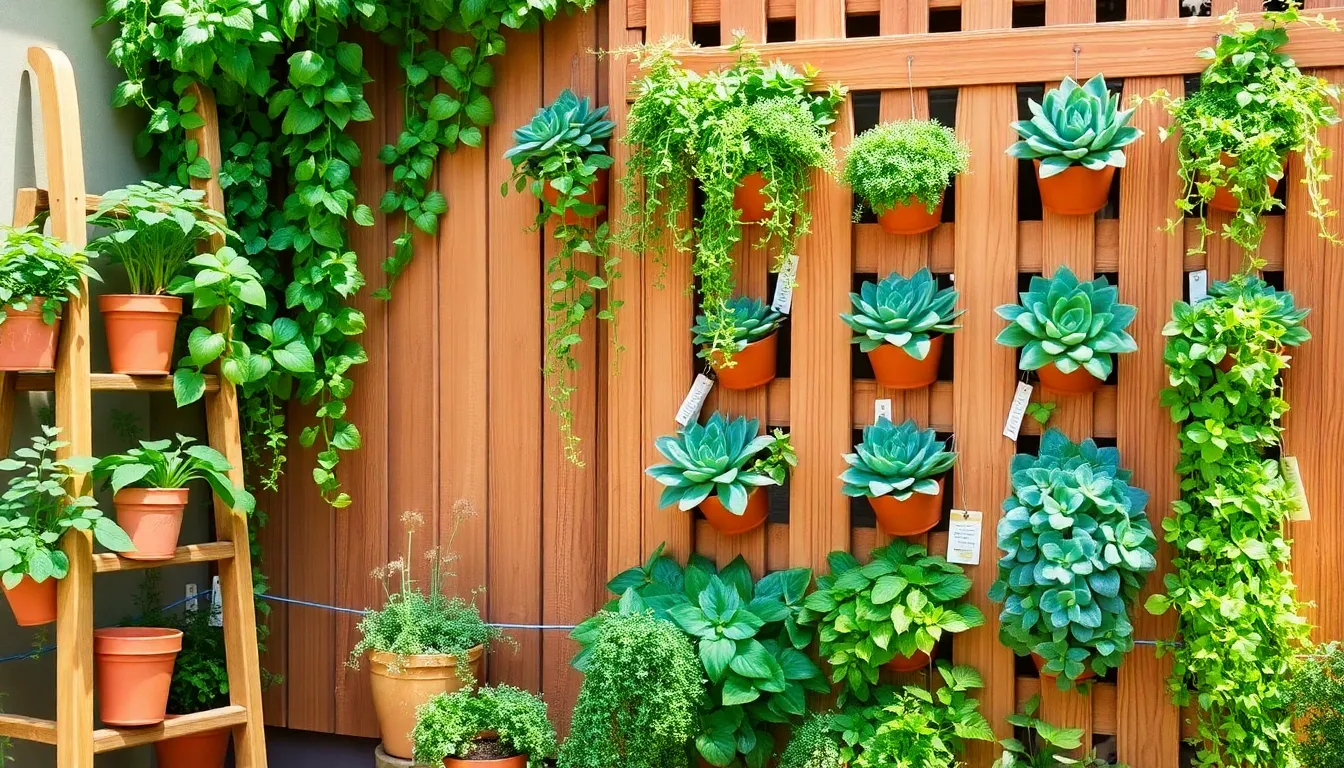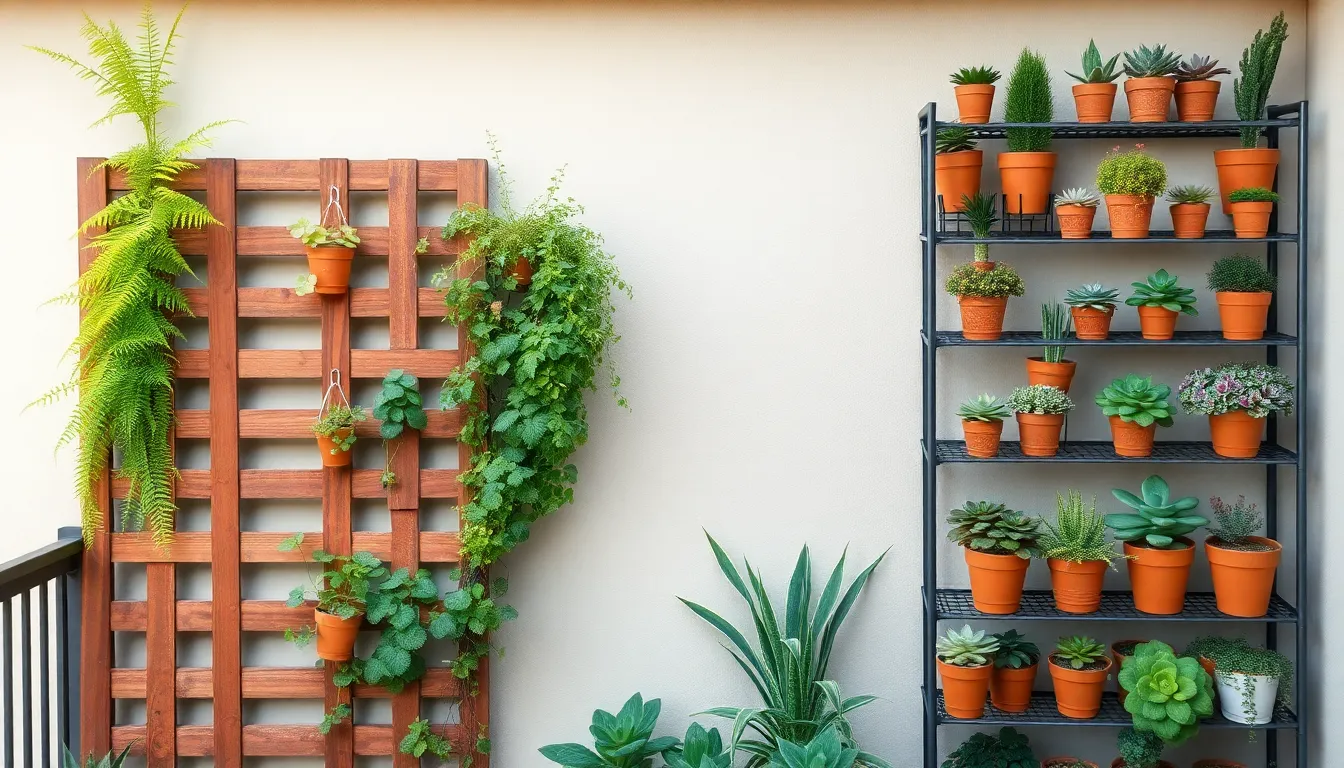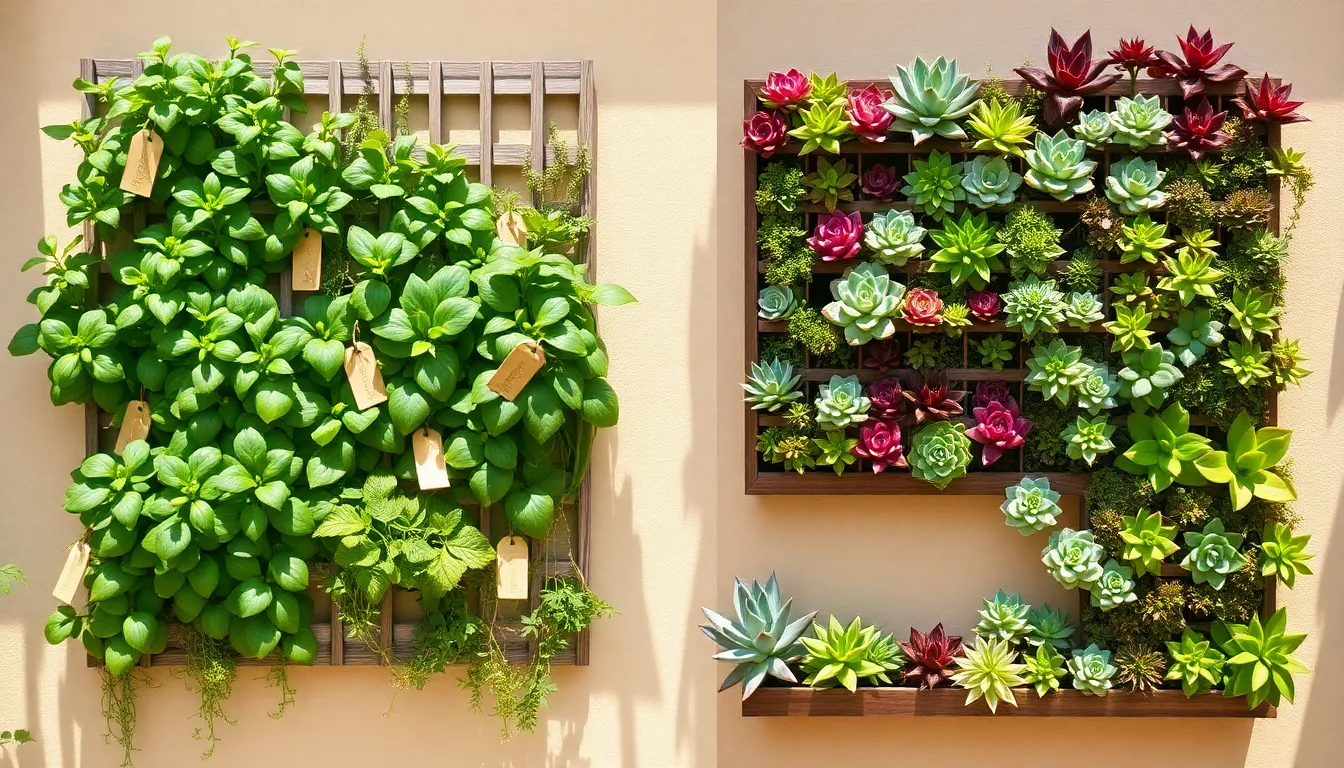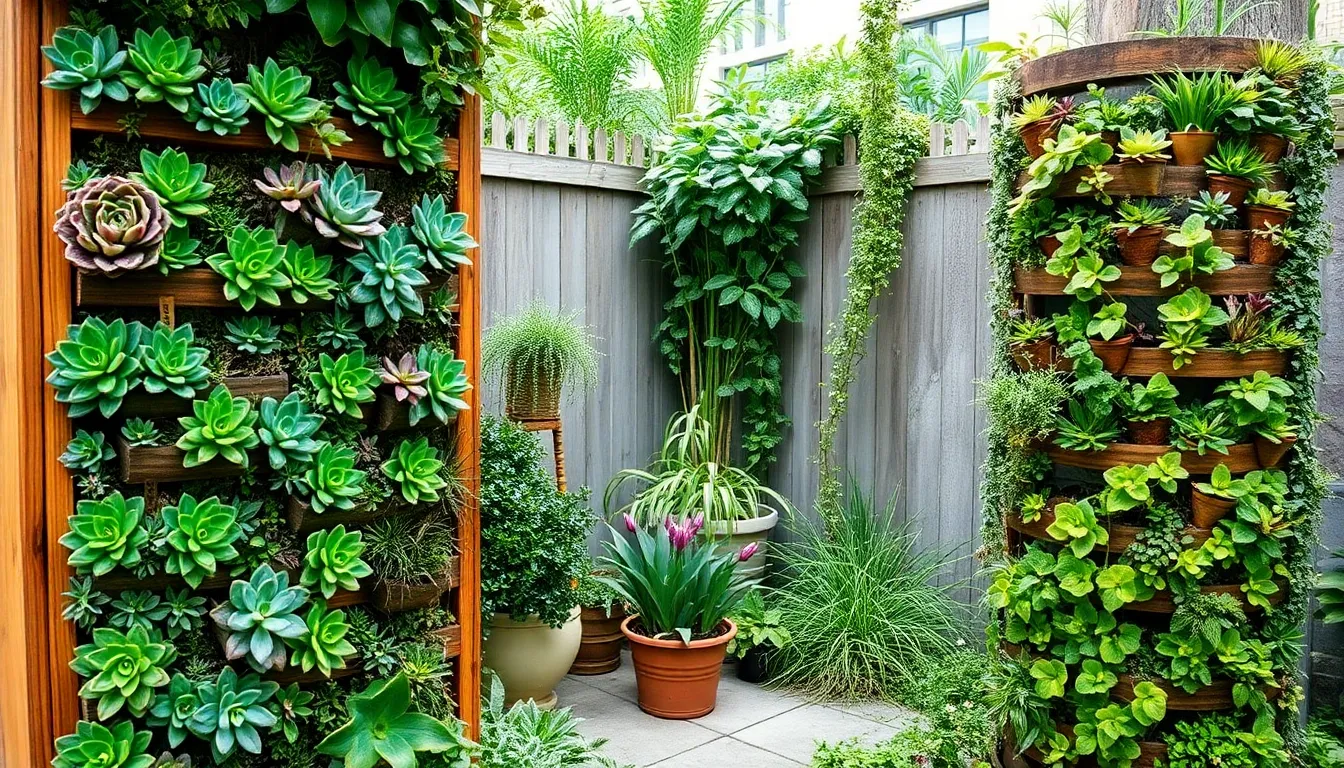The allure of vertical gardening is impossible to ignore, especially in today’s world where space is a prized commodity. Whether you’re a seasoned green thumb looking to expand your horticultural horizon or a newcomer eager to cultivate your first verdant oasis, vertical gardens offer an innovative way to maximize your growing space and infuse your surroundings with life. Their beauty lies not only in their ability to transform a bare wall into a lush landscape but also in their accessibility; anyone can craft a vertical garden with a little guidance and inspiration.
In this article, we will explore ten inspiring vertical garden ideas that are perfect for beginners yet sophisticated enough to captivate experienced gardeners. You’ll discover creative ways to use everyday materials and unconventional spaces to create your own flourishing vertical haven. From simple pocket planters that bring herbs to your kitchen window to elaborate trellises that transform your backyard fence, each idea is designed to spark your imagination and empower you to start your vertical gardening journey.
As you delve into these inspirations, you’ll gain insights into the essentials of plant selection, watering techniques, and maintenance tips tailored for vertical setups. We’ll guide you through the practical steps needed to ensure your vertical garden thrives, helping you avoid common pitfalls and embrace the joys of vertical gardening. By the end of this article, you’ll be equipped with the knowledge and confidence to turn even the smallest of spaces into a vibrant, living masterpiece.
Choosing Vertical Garden Structures
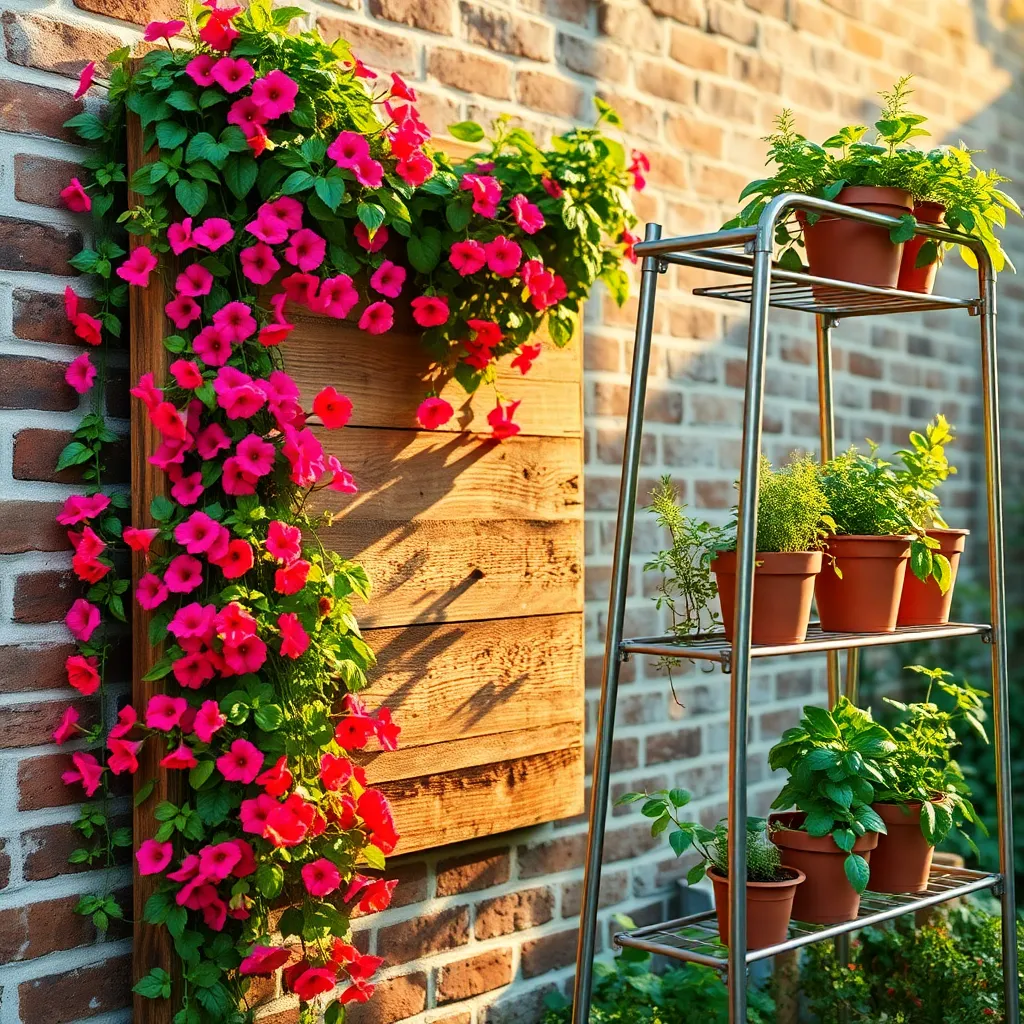
When choosing vertical garden structures, it’s important to consider the available space and the types of plants you wish to grow. Start by assessing whether you need a freestanding unit or a wall-mounted system, as this will influence your plant choices and overall garden design.
Freestanding units are ideal for those who have ample floor space and want flexibility in their garden layout. They can be moved around easily and are perfect for growing a variety of plants, from herbs to flowering species, thanks to their stability and size.
For smaller spaces, wall-mounted systems can be a great solution. These systems save space and are excellent for growing lightweight plants like lettuce or strawberries, which thrive in such environments with a bit of creativity and care.
Ensure that whatever structure you choose provides adequate drainage, as this is critical for plant health. You can enhance your vertical garden by using high-quality potting soil that retains moisture without becoming waterlogged, which is essential for the success of your plants.
Ideal Plants for Vertical Gardens
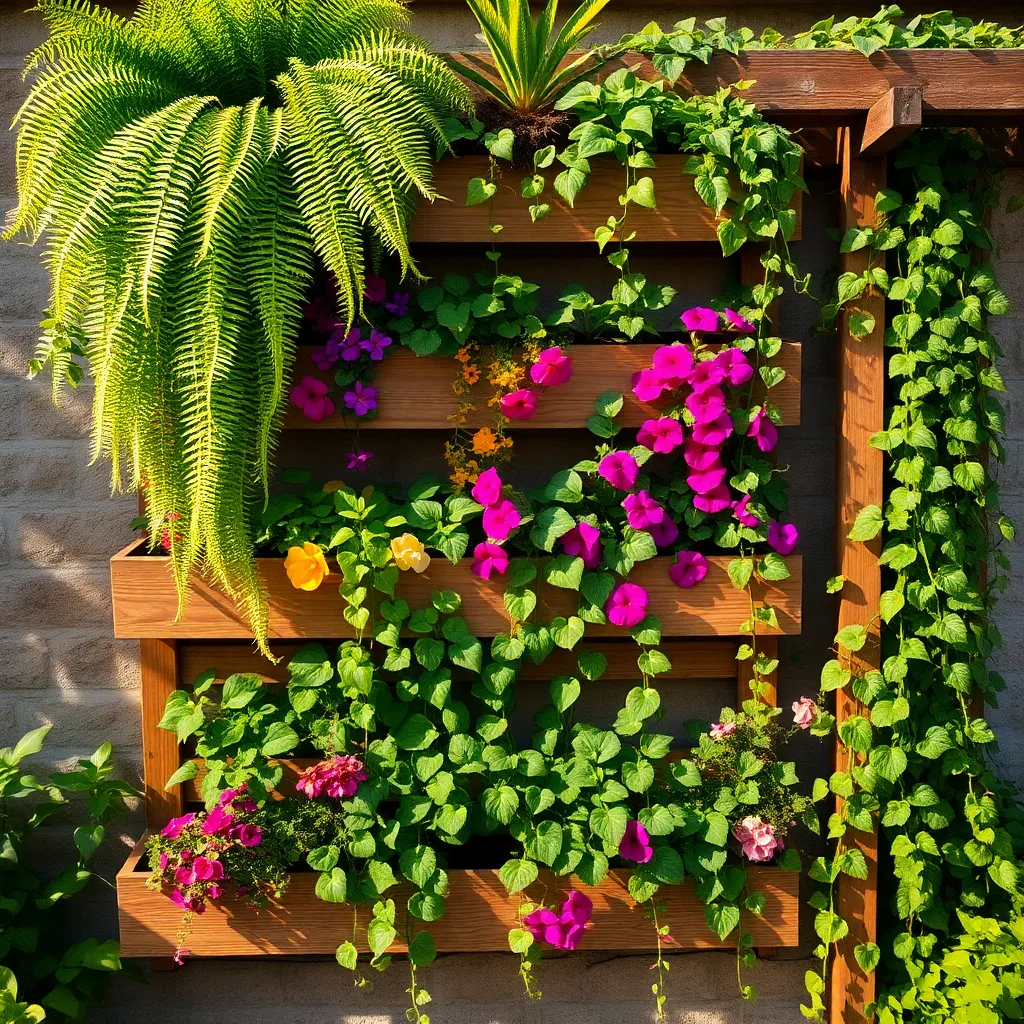
Vertical gardens are perfect for incorporating a variety of plants that thrive in limited space. One excellent option is **herbs**, which are not only aromatic but also easy to maintain.
Herbs such as basil, thyme, and mint are particularly well-suited for vertical gardens, as they require minimal space and can be harvested frequently. Ensure the vertical garden structure receives plenty of sunlight, as most herbs thrive in **full sun conditions**.
For beginners, **succulents** are another fantastic choice due to their low maintenance needs. These plants require well-draining soil and minimal watering, making them ideal for busy gardeners who might forget frequent watering.
If you’re looking for something more vibrant, try adding **flowering vines** like jasmine or clematis. These plants are great for adding color and fragrance, but they require a sturdy support structure to climb.
Ensure flowering vines have a **loamy soil** base for better drainage and nutrient retention, and water them regularly, especially during dry spells. By choosing the right plants for your vertical garden, you’ll create a lush and productive space that enhances any area.
DIY Pallet Garden Setup
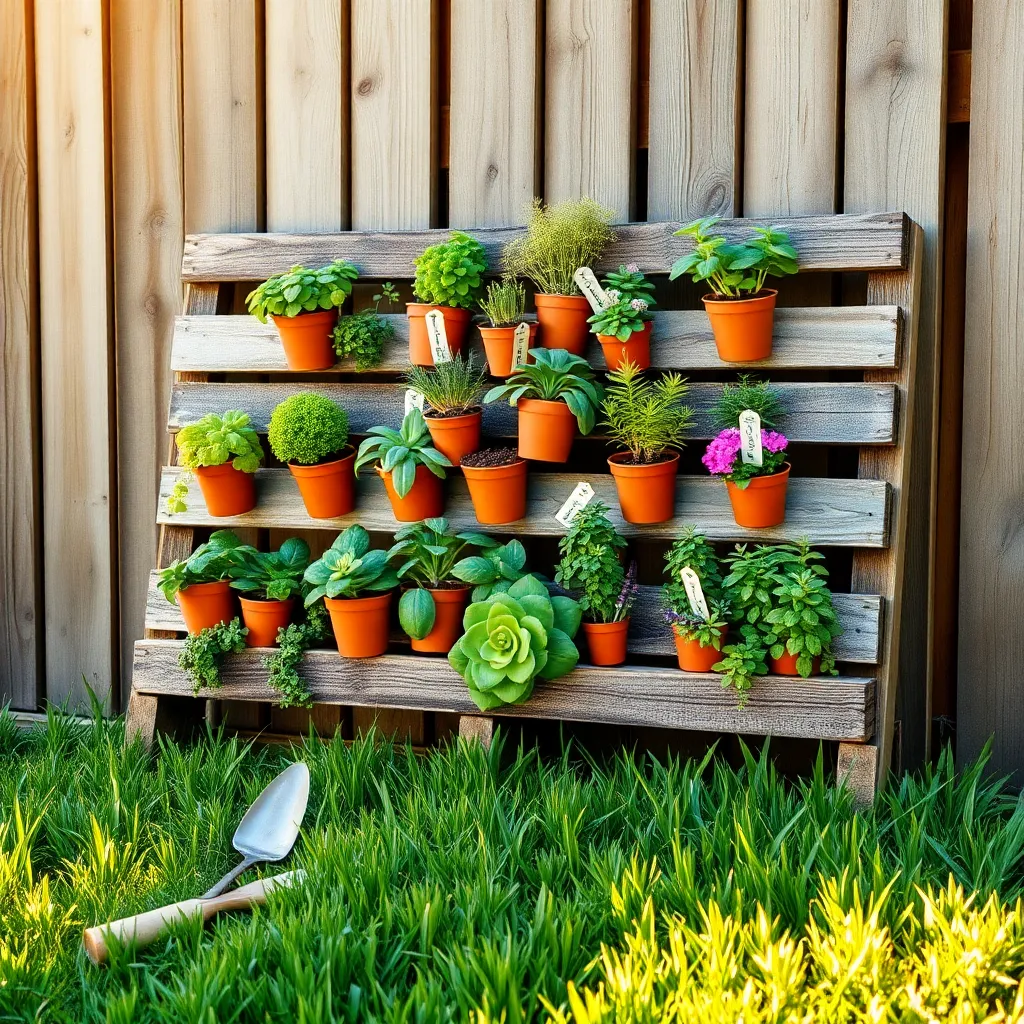
Transforming a wooden pallet into a vertical garden is a simple yet effective way to make the most of limited space. Begin by sourcing a sturdy, untreated pallet, as this will ensure it’s safe for growing edibles and won’t leach harmful chemicals into your plants.
After selecting your pallet, prepare it by sanding any rough edges to prevent splinters and injuries. Next, staple landscape fabric to the back and sides to create planting pockets, ensuring the soil stays in place when you mount the pallet vertically.
When choosing soil, opt for a high-quality potting mix that retains moisture yet drains well, as this will support root health. Consider adding a slow-release fertilizer to the soil mix to provide nutrients over time, reducing the frequency of additional feedings.
For plant selection, choose varieties that thrive in vertical settings, such as herbs, small flowering plants, or leafy greens. Water your pallet garden regularly, especially during hot or dry spells, as vertical setups can dry out more quickly than traditional gardens.
To mount your pallet garden, securely attach it to a wall or fence using strong brackets or hooks to withstand wind and weather. As your plants grow, regularly check for pests and prune back any overgrown sections to maintain a tidy appearance and promote new growth.
Hanging Planters: Space-Saving Tips
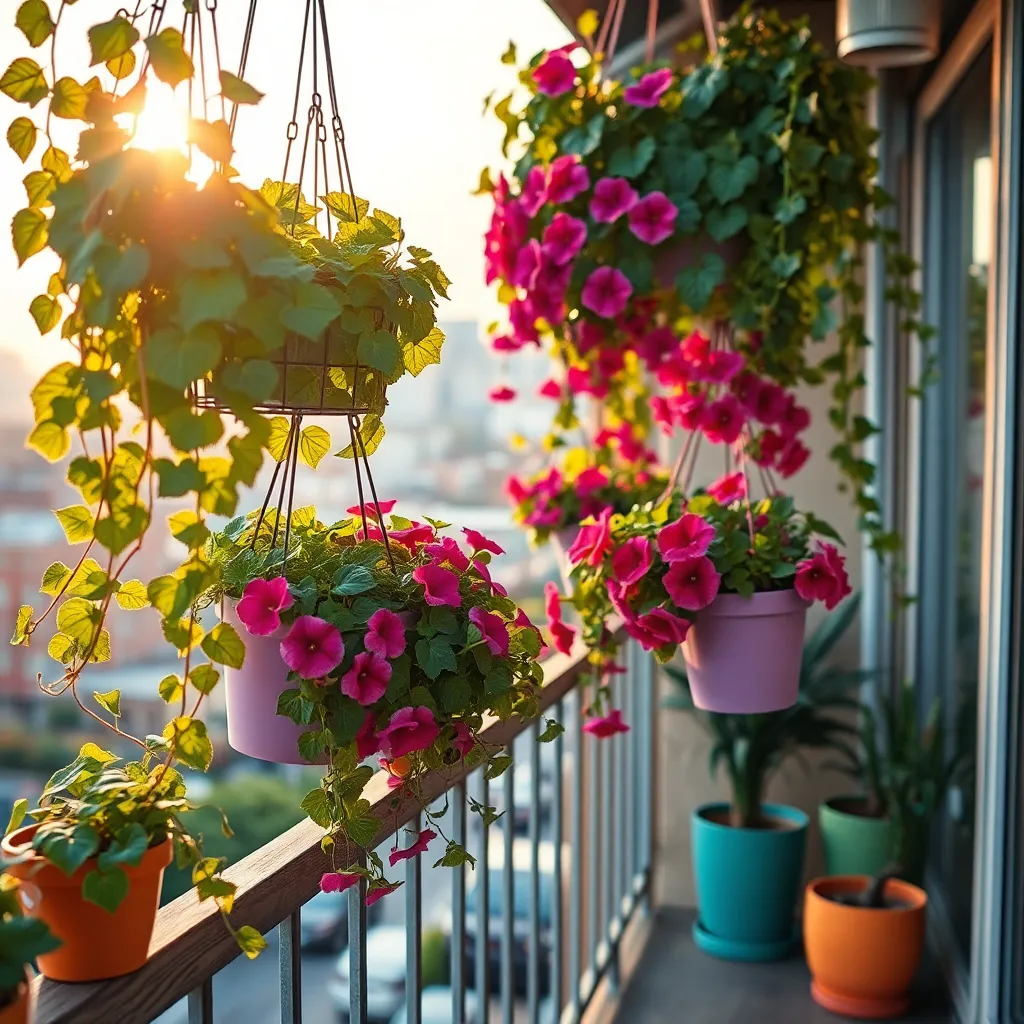
Hanging planters offer a fantastic way to maximize space, especially in small gardens or urban environments. They allow you to bring greenery to balconies, patios, or even indoors without taking up floor space.
When choosing plants for hanging planters, consider those that naturally cascade, like ivy, ferns, or trailing succulents. These plants not only look stunning but also thrive when suspended, taking advantage of ample airflow and light.
Opt for a lightweight potting mix to ensure your hanging planters aren’t too heavy and are easier to manage. A mix containing components such as perlite or vermiculite will improve drainage and prevent waterlogging, which is crucial for healthy plant roots.
Watering can be a bit tricky with hanging planters since they tend to dry out faster. Check moisture levels regularly, and consider using self-watering pots or adding water-retaining crystals to the soil to maintain consistent moisture.
For a more advanced approach, incorporate a drip irrigation system to your hanging planters. This can help maintain a regular watering schedule, especially during hot, dry seasons, ensuring your plants receive the hydration they need without over-saturating the soil.
Fertilization is also essential for hanging plants as nutrients can leach out quickly with frequent watering. Use a balanced liquid fertilizer every two weeks during the growing season to keep your plants lush and thriving.
Wall-Mounted Herb Gardens
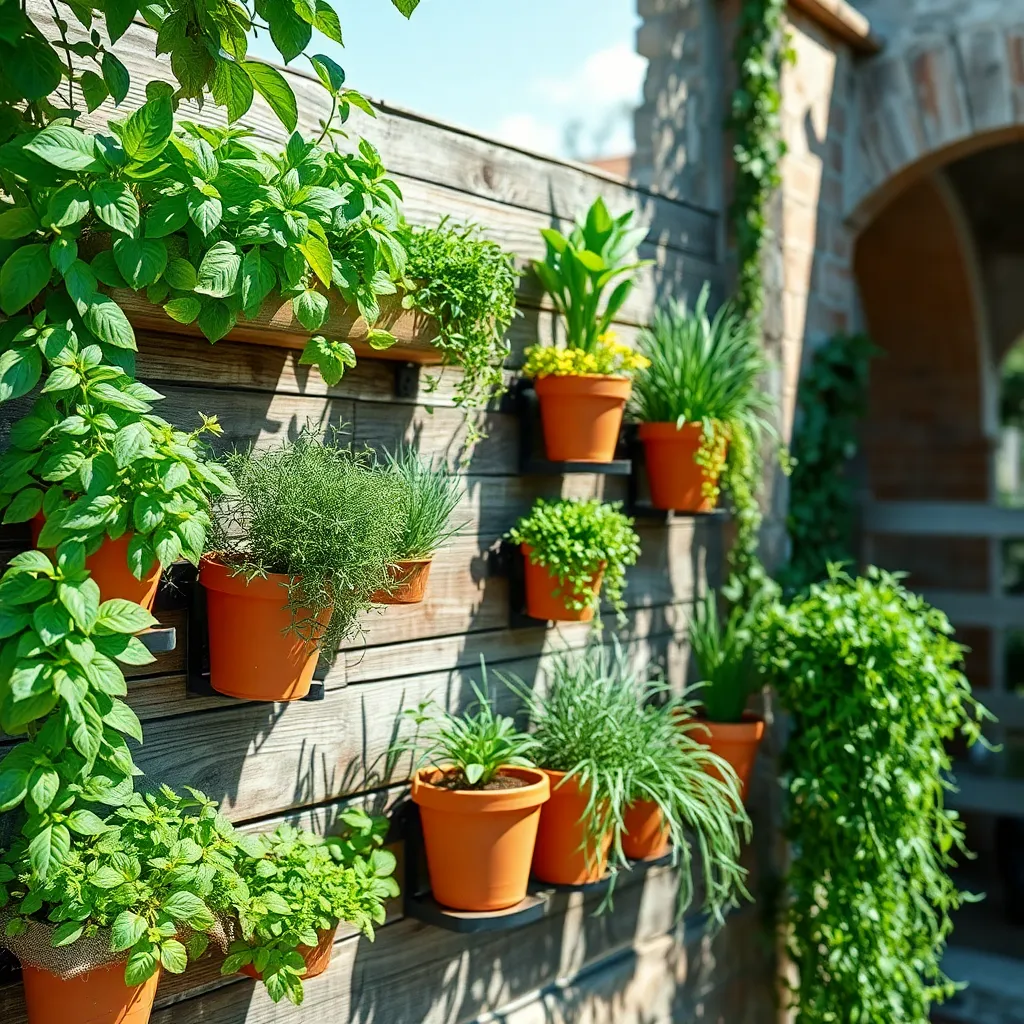
Wall-mounted herb gardens are a fantastic way to maximize space while keeping fresh flavors within easy reach. They can be installed on a sunny kitchen wall or even outdoors, allowing you to grow a variety of herbs regardless of limited space.
When setting up your wall-mounted herb garden, consider using lightweight containers to prevent strain on the wall. Ensure the containers have good drainage holes to avoid root rot, which is common when plants sit in waterlogged soil.
Begin by selecting herbs that thrive in similar conditions, such as basil, parsley, and cilantro, which all prefer full sun and well-draining soil. Use a high-quality potting mix, perhaps one enriched with slow-release fertilizer, to provide the nutrients your herbs need to flourish.
Watering is crucial, so check soil moisture regularly; herbs in wall-mounted gardens might dry out faster than those in traditional pots. Water thoroughly when the top inch of soil feels dry, but be cautious not to overwater, as this can lead to unhealthy plants.
Simple Trellis Designs for Beginners
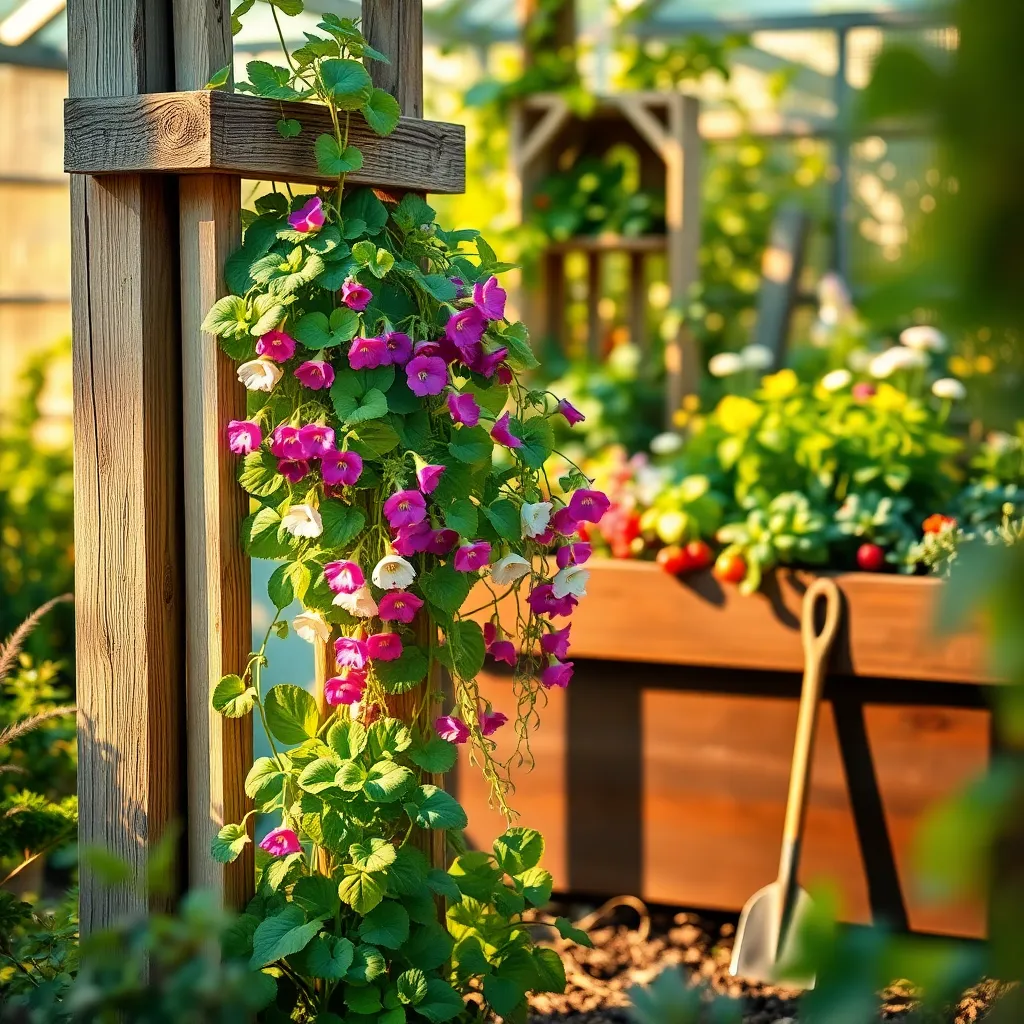
Creating a simple trellis can transform your garden space, offering support for climbing plants like peas, beans, and cucumbers. A basic design involves using sturdy wooden stakes or bamboo poles, which are easy to find at most garden centers.
For a beginner-friendly trellis, use a hammer to secure stakes into the ground at least 12 inches deep for stability. Then, connect the stakes with horizontal rows of string or twine, spacing them about 6 inches apart to allow plants to climb naturally.
To ensure your trellis is effective, position it in an area that gets plenty of sunlight, as most climbing plants thrive in bright conditions. Water your plants regularly, ensuring the soil is consistently moist but not waterlogged to promote healthy growth.
Beginners might consider growing peas, which are ideal for trellis training due to their natural tendrils. These plants prefer well-drained soil enriched with compost, and they typically need watering once a week unless you’re experiencing particularly dry conditions.
For a touch of creativity, try weaving colorful string or ribbon into your trellis design to add visual interest. This can also serve as a guide to help young plants find their way up the structure, making it both practical and decorative.
Creating a Succulent Wall Art
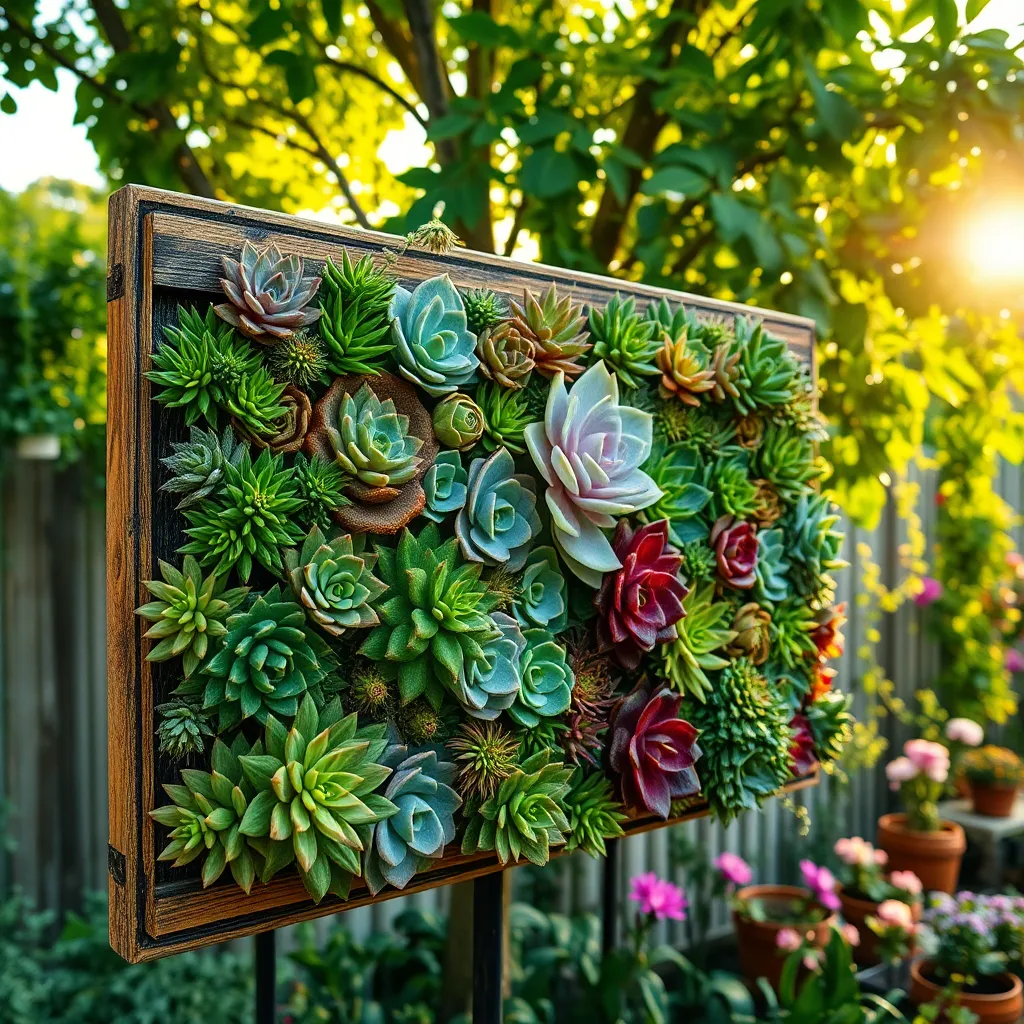
Transforming a plain wall into a living piece of art with succulents is both rewarding and visually striking. To start, choose a sturdy frame that can support the weight of soil and plants, and ensure it has a solid backing to hold everything in place.
Fill the frame with a well-draining soil mix, essential for maintaining the health of your succulents. A blend of potting soil, coarse sand, and perlite works wonders for preventing root rot and promoting drainage.
Next, select a variety of succulents, like Echeveria, Sedum, or Crassula, which thrive in similar conditions. Ensure each plant has enough space to grow by positioning them carefully within the frame, allowing for future expansion.
Water your succulent wall sparingly, as overwatering is a common mistake. A good rule of thumb is to water only when the soil feels completely dry to the touch, which typically means every two to three weeks.
For those looking to advance their skills, consider incorporating trailing succulents such as String of Pearls for added dimension. Remember to rotate the wall art occasionally if it’s indoors to ensure even light exposure for all plants.
Vertical Garden Maintenance Basics
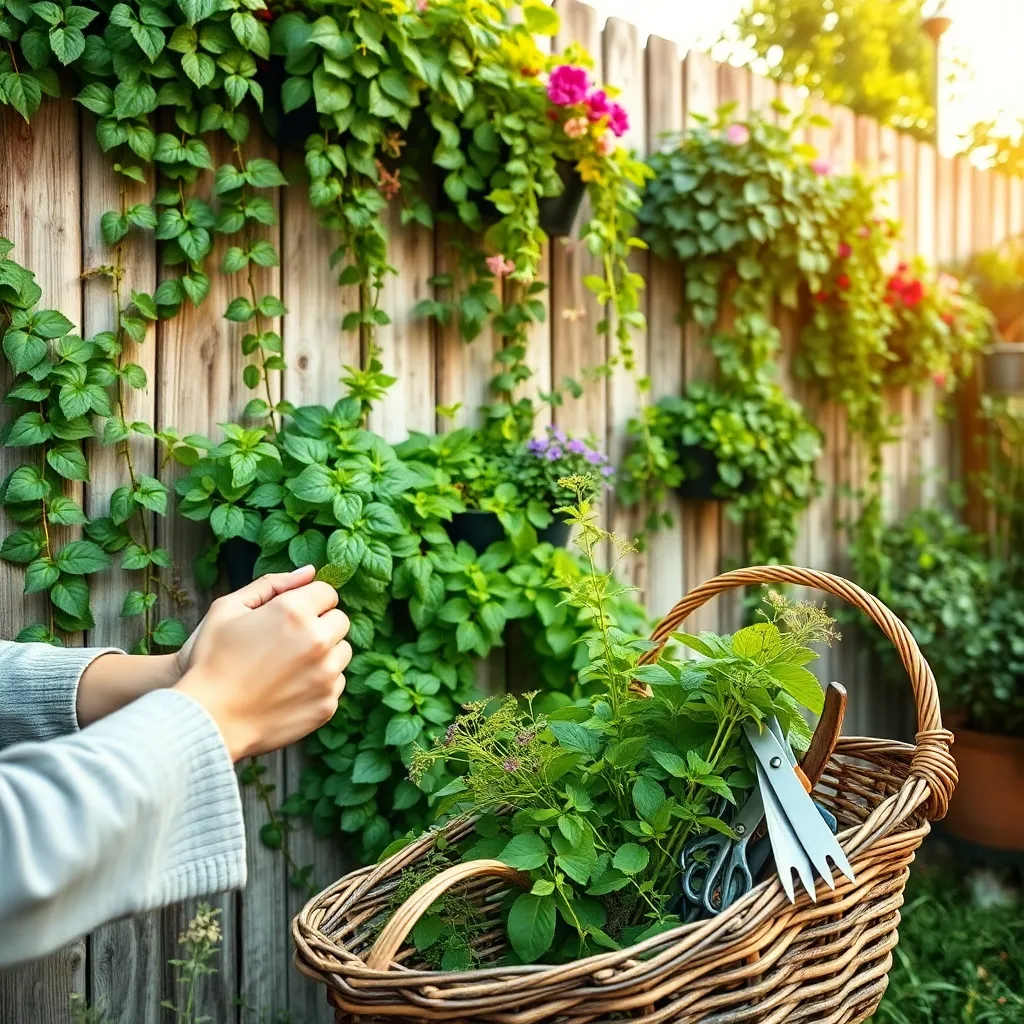
A successful vertical garden requires regular maintenance to thrive, regardless of the plants you choose. Watering is crucial, as plants in vertical setups can dry out faster than those in the ground due to exposure and reduced soil volume. Aim to water deeply but infrequently, allowing the water to reach the lower roots.
To ensure healthy growth, you should monitor your plants for signs of nutrient deficiency. Use a balanced, water-soluble fertilizer every four to six weeks during the growing season to supplement the soil’s nutrients. Check the specific needs of your plant species to avoid over-fertilizing, which can be detrimental.
Regular pruning is key to maintaining the shape and health of your vertical garden. Trim back any dead or diseased foliage and encourage bushier growth by pinching back the tips of your plants. This not only improves appearance but also promotes better air circulation, which reduces the risk of pests and diseases.
Pay attention to the lighting conditions where your vertical garden is placed. Most plants require at least six hours of sunlight a day, but some might thrive in shadier spots. Consider rotating your garden or using artificial grow lights if natural light is insufficient, ensuring all plants receive the light they need to flourish.
Maximizing Light for Vertical Growth
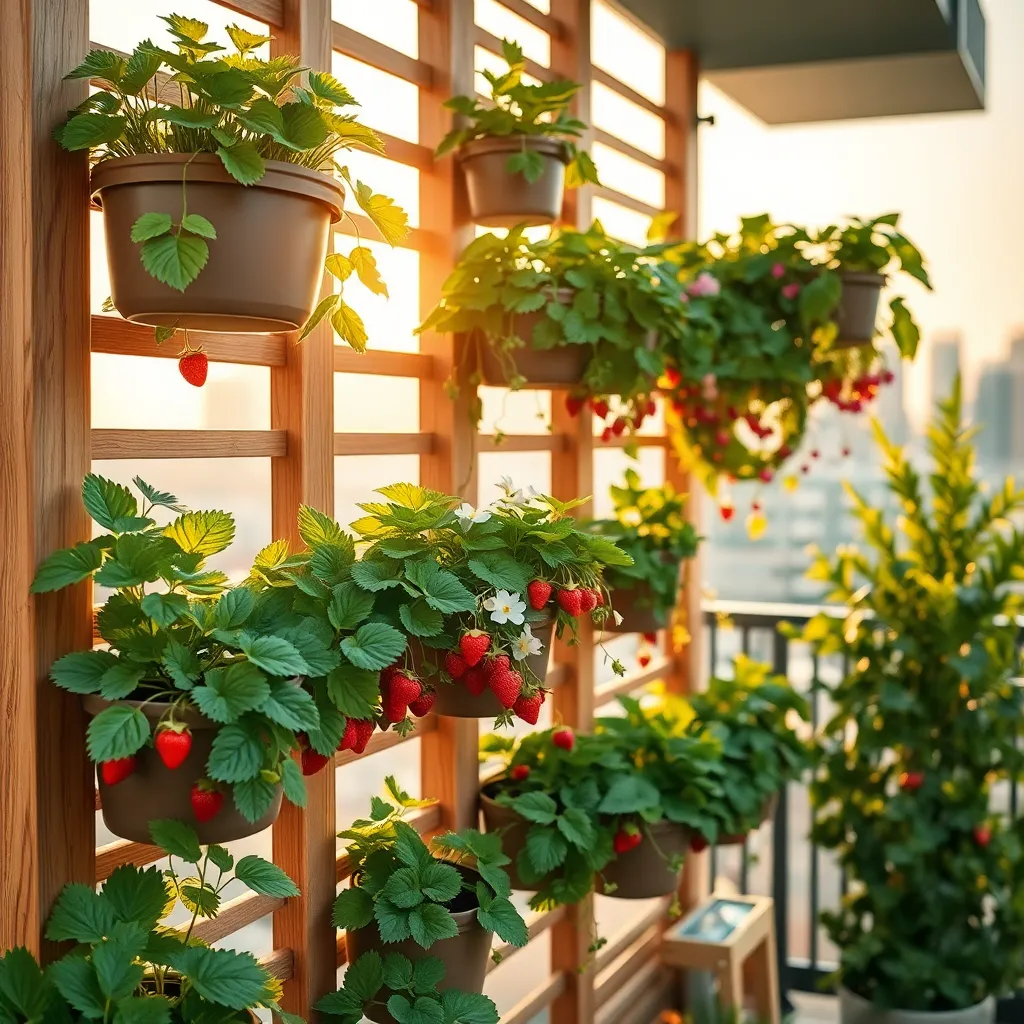
To maximize light for vertical growth, position your vertical garden in a location that receives ample sunlight, ideally at least six hours a day. This is particularly important for sun-loving plants like tomatoes and peppers, which thrive with plenty of light exposure.
Consider installing reflective surfaces, such as mirrors or light-colored walls, around your vertical garden to increase the available light. Doing so can help optimize light distribution, especially in partially shaded areas, and promote more uniform growth.
Utilize vertical structures like trellises or wire frames that allow plants to climb and capture more sunlight. For instance, climbing beans and cucumbers can benefit from such setups, allowing them to reach toward the light more effectively.
For indoor vertical gardens, incorporate grow lights to supplement natural light, especially during shorter winter days. LED grow lights are cost-effective and energy-efficient, providing the necessary spectrum to support photosynthesis and healthy plant growth.
Budget-Friendly Vertical Garden Ideas

Creating a vertical garden doesn’t have to break the bank; you can start with simple materials such as recycled wood pallets. These pallets can be easily transformed into a vertical planter by attaching landscape fabric to the back and filling the spaces with a lightweight potting mix that’s well-draining for optimal plant growth.
Another affordable option is to use hanging shoe organizers, which can be hung on a wall or fence to create pockets for plants. Choose herbs or small flowering plants, ensuring that each pocket has adequate drainage by adding small holes at the bottom.
For those with limited space, consider using inexpensive plastic bottles to craft a hanging garden by cutting them in half and mounting them on a vertical surface. Fill these containers with a mix of compost and potting soil, and opt for fast-growing plants like lettuce or strawberries that thrive in small spaces.
Incorporating vertical trellises made from old ladder frames can also save money and space while supporting climbing plants. Use untreated wood to prevent toxins from leaching into your soil, and plant climbing vegetables such as peas or beans for a lush, edible display.
Conclusion: Growing Success with These Plants
In exploring the ’10 Beginner-Friendly Vertical Garden Inspirations,’ we’ve unearthed a treasure trove of relationship strategies that can flourish in any setting. From cultivating mutual growth like a cascading wall of greenery to embracing flexibility akin to the versatile trellis, each concept is designed to nurture and elevate your connections. We’ve navigated the importance of shared goals, the beauty of balance, effective communication as foundational as a sturdy frame, and the need for personal space, mirrored in the vertical garden’s creative use of levels. The themes of patience, support, and adaptability intertwine throughout, inviting you to sow seeds of understanding and harvest a vibrant partnership.
Your actionable next step? Choose one concept that resonates and discuss it with your partner today. This small step is a giant leap towards deeper connection and understanding. As you embark on this journey, remember to bookmark this article. It’s your go-to guide for nurturing your relationship, just like tending to a thriving garden.
Looking forward, each effort you invest today is a seed for tomorrow’s success. Embrace the journey with warmth and anticipation—your relationship is a garden waiting to flourish. Your future self will thank you for it!

